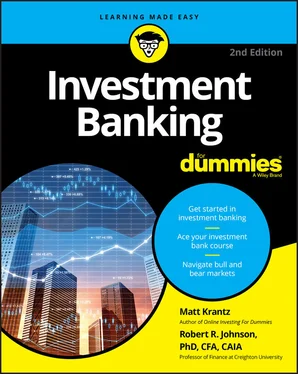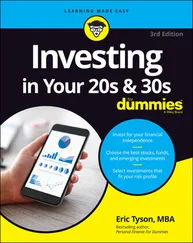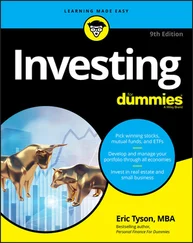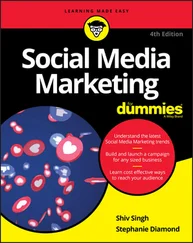When you’re in school, you want to see your name on the perfect attendance list or maybe the dean’s list. But when you’re an investment banker, the goal is to be part of the underwriting list on as many IPOs as possible. When a company goes public, it must list all the investment banks and advisors that helped bring the shares to market. For big IPOs, the list can be a long one and is often a who’s who of investment banks.
If you want to get sued, one of the best ways to make it happen is to start a business. Companies of all sizes are constant targets of lawsuits, and young companies looking to go public are no exception. Most of these suits are nuisances or minor, but periodically outstanding litigation can be significant, especially if it pertains to the product or service being sold. This section of the prospectus must outline any pending suits against the company. The company itself usually gives a little bit of commentary on how significant it thinks the litigation is.
Supporting the IPO: Making success last
When IPOs fail, it makes investment bankers look bad. If shares of an IPO can’t stay above the offering price (the price at which the shares are sold to initial investors) it reflects poorly on the investment bankers. After all, if the shares were priced too high, that meant that the investors overpaid or the investment banker didn’t understand the business well enough. When a stock starts to trade on an exchange, such as the New York Stock Exchange, following the IPO that’s called aftermarket trading. If the price of the IPO, in aftermarket trading, falls below the offering price, it’s called a broken deal. Not good for investment bankers or investors.
And that’s why keeping a company on the right track, even after its IPO, is viewed as part of the responsibility of the investment banker. To be clear, the investment banker can’t do anything to change the way the company is being run — that’s up to the management team of the company. Still, there are levers that the investment bankers can pull to keep the IPO working for all parties, at least in the very short term.
Holding the insiders hostage with lockups
Just about the last thing IPO investors want to see is all sorts of selling by officers and directors the second after a company goes public. Think of it this way: Stock prices are set by supply and demand. If after a company goes public, employees and officers start dumping their stock, the market will be swamped with a supply of stock and push down the price of the shares. This unleashing of supply could create an avalanche of selling, not to mention spook investors by the strong negative signal it sends.
To prevent this downward spiral, investment bankers help companies create a lockup period (a set period of time during which the officers and directors are prohibited from selling shares). Lockup periods come in all types and can be customized by the company and its investment bankers.
 Modern IPOs are increasingly using a style of lockup period that expires gradually over time. Usually, the investment banks want to lock up all insider sales for at least 90 days after the IPO to give the fledgling stock a good period of time to find a natural equilibrium between buyers and sellers. After 90 days, the first group of insiders will get the green light to sell. After that first lockup comes off, another group of shares may be released after 180 days and another group after 365 days. By spacing out the lockup expiration dates like this, the investment bankers can somewhat control the flow of stock into the market.
Modern IPOs are increasingly using a style of lockup period that expires gradually over time. Usually, the investment banks want to lock up all insider sales for at least 90 days after the IPO to give the fledgling stock a good period of time to find a natural equilibrium between buyers and sellers. After 90 days, the first group of insiders will get the green light to sell. After that first lockup comes off, another group of shares may be released after 180 days and another group after 365 days. By spacing out the lockup expiration dates like this, the investment bankers can somewhat control the flow of stock into the market.
Regulators get a bit touchy when companies start looking to sell stock to the public for the first time. Securities regulations are in place to curb any activities that will fool investors into buying investments where the sellers know they’re a bust. Regulators and investment bankers work together to control the information that a company and its officers parse out to investors prior to an IPO and right after it’s done.
A company is prohibited from engaging in promotional activity to push up the value of its IPO, usually prior to the IPO and up to three months afterward. Investment bankers, too, must watch what they say and stick to the facts and not use promotion. It’s a fine line, for sure. After all, part of the IPO process includes roadshows (visits with potential investors). Talking about the IPO or the company is not illegal. In fact, it’s essential — full disclosure is the point of the IPO process. But the key is that the company and investment bankers can’t get promotional and make misleading promises about the company’s prospects.
Follow-on and secondary offerings
Raising money from the capital market can be like plastic surgery in Hollywood: Once someone gets started, it can be hard to stop. Similarly, once a company raises money from investors by selling stock to the public, that’s usually not the end of the process.
Companies, with the help of their investment bankers, can come back another time to raise money with a follow-on offering. During a follow-on offering, companies can sell additional shares to the public. These offerings can generate more capital for the company, which may help it turbocharge its growth. But in the process, the company is also creating new shares and selling them. And when the additional shares hit the market, they dilute the value of the existing shares, or make them worth less because the company is carved into more pieces. The underwriter is closely involved in these follow-on offerings.
 The word dilution is like poison with investors. Any move by a company that increases the number of shares and reduces the value of each share is typically frowned upon by existing investors.
The word dilution is like poison with investors. Any move by a company that increases the number of shares and reduces the value of each share is typically frowned upon by existing investors.
Another time additional shares may go to market is in a secondary offering. Secondary offerings allow significant current investors to sell their shares in an organized fashion, after the IPO. Secondary offerings are not dilutive because no new shares are created. The shares existed before — they were just held by insiders. Insiders are simply selling shares they had before.
Some companies resist or put off selling shares to the public as long as possible. They might postpone an IPO because they don’t need the money, as they have patient investors not in a hurry to cash in. Some companies might prefer to stay private so they don’t have to worry about the requirements of being a public company. But for whatever reasons some companies stay private for a long time, a small few get very large. These companies, which generally see their valuations balloon to $1 billion or more, are so rare that they’re called unicorns. Just as you’re not likely to see a unicorn grazing in the fields, private companies able to hit valuations of $1 billion are rare, too. Yet, in 2019 investors spotted two unicorns: ride-sharing company Uber Technologies and corporate collaboration Slack. By the time they became public companies, Uber and Slack were worth $8.1 billion and $7.4 billion, respectively.
Seeing What Sell-Side Analysts Do
When companies decide to go public, there’s no shortage of investment bankers who are lining up to get the job. The fees associated with underwriting an IPO can be significant, so just about every investment banking firm would be happy to get the piece of the deal.
Читать дальше

 Modern IPOs are increasingly using a style of lockup period that expires gradually over time. Usually, the investment banks want to lock up all insider sales for at least 90 days after the IPO to give the fledgling stock a good period of time to find a natural equilibrium between buyers and sellers. After 90 days, the first group of insiders will get the green light to sell. After that first lockup comes off, another group of shares may be released after 180 days and another group after 365 days. By spacing out the lockup expiration dates like this, the investment bankers can somewhat control the flow of stock into the market.
Modern IPOs are increasingly using a style of lockup period that expires gradually over time. Usually, the investment banks want to lock up all insider sales for at least 90 days after the IPO to give the fledgling stock a good period of time to find a natural equilibrium between buyers and sellers. After 90 days, the first group of insiders will get the green light to sell. After that first lockup comes off, another group of shares may be released after 180 days and another group after 365 days. By spacing out the lockup expiration dates like this, the investment bankers can somewhat control the flow of stock into the market.










